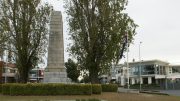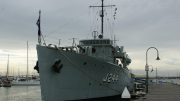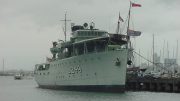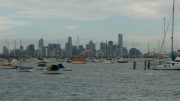The Yalukit-willam clan of the Kulin nation were the first people to call the land around Hobson’s Bay home and were virtually wiped out in the mid 1830’s by the effects of European settlement in the area including a very nasty and deadly typhoid epidemic.
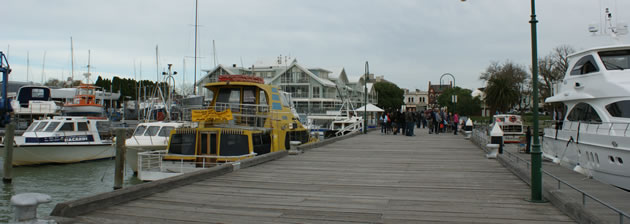
Williamstown was named after King William IV who was the monarch at the time of discovery, earlier the town was known as Port Harwood. At one stage Williamstown looked like being the site of what would become Melbourne but the area didn’t have enough fresh water to sustain a much larger town. Main streets were set out wide and a bit of planning was put in place but the major settlement was built further upstream.
The sheltered harbour soon made Williamstown an ideal port and much of the cargo bound for Melbourne came into the Williamstown area, just as it does still today with the Port of Melbourne only a few kilometres up the Yarra River.
The first land sales are reported to have occurred in 1837 and the convict built stone jetty at Gem Pier was built in 1838 when a ferry service between Williamstown and Melbourne commenced. Ship building started in 1839 and continues to this day with Williamstown winning several huge Australian and New Zealand navy contracts over the years to build vessels.
The Victorian Gold Rush was the defining times of Williamstown the town grew enormously with many gold seekers from Europe and California arriving in the town on their way to the gold fields in the north west. The first telegraph line in Australia operated between the town and Melbourne from 1854 and the railway to Melbourne opened in the same year. Many of the riches from the Gold Rush came back to Williamstown with grand hotels, shops,beautiful parklands and some magnificent houses many of which are still in use today.
With threats of a Russian invasion during the Crimean war in 1855 like Fort Queenscliff, Fort Gellibrand was constructed and was used as a very important training ground for World War I soldiers.
The docks were a hive of activity helping the war effort from 1914, many merchant ships were transformed into transport ships for the first World War. Over 1500 men worked in on the docks, but disputes between the government and unions led to a gradual decrease of orders.
After World War II Williamstown took in hundreds of migrants from central Europe who where housed in huts based at the old Williamstown racecourse. The end of World War II to the 1970’s saw the town slide into disrepair and become a unattractive industrial town, but fortunately much of its charm was left from the wrecking ball and just left to slowly decay, awaiting the day when the town would rise again to its former glory. Well that time has come and Williamstown is looking better than ever, the old girl has been restored and new people have moved in making it one of the jewels of Melbourne.

Authough still a working town, Williamstown is home to some of the city’s best lifestyles and only minutes from Melbourne and an hours drive to Geelong and the surrounding beaches. Al fresco dining has arrived, great bars, restaurants, boutiques and most of all a great multicultural mix of happy people, knowing they are living in one of the most beautiful places in Australia, full of heritage and rich in culture. New developments are arriving including the large rifle range estate making living in the Williamstown area a dream come true for so many more families- ensuring a prosperous future for the Williamstown area.

